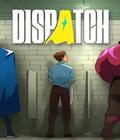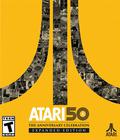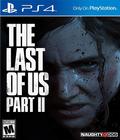The Last of Us: Part 2: It's no small feat to follow up such a beloved game from the prior console generation. There were plenty of people who wanted Naughty Dog to walk away from the series and leave the vague mysteries of the first game as-is, rather than risk mucking up such a tight, contained experience. It would've been easy to leave the series alone and move on, but Naughty Dog stuck to its guns, clearly eager to convey its vision for Ellie and crew, and I couldn't be more impressed with the outcome.
I'll do my best to avoid narrative spoilers, but interested parties should play the first entry in the series before diving into TLoU 2, since this is a direct continuation from the events that unfolded in the prior game. After Denver, Joel and Ellie find themselves back in Jackson alongside Tommy and the bustling community that's built up around him. This cozy, closed-off community — filled with bars, BBQ, and dancing — almost feels normaldespite the devastation that sits on the other side of the barricades. If it weren't for the daily patrols and the occasional loss of life, one may not even realize what's going on in the rest of the world.
All of this is flipped upside-down when an unknown group attacks the Jackson community. Following this event is a tale of acceptance, hatred, revenge, perspective, and as Ellie and friends embark to the city of Seattle (or what's left of it) to track down the group responsible for the initial encounter. Despite the shift in perspective from Joel to Ellie, players still face the series' same gritty tone.
As familiar as I was with the first game and the marketing campaign leading up to TLoU 2's release, I didn't expect something quite like this. Having recently become the father to a baby girl, I have a new perspective on Ellie and Joel's relationship, but this title will move anyone with a heart. Even in the bleak world of TLoU 2, Neil Druckmann and team have crafted touching moments that have shaken me to the core — and one scene brought me to tears. With that in mind, it's important to note that happy, feel-good moments are few and far between. This is an emotionally draining game with some downright brutal scenes. Like any other recent release from Naughty Dog, everything drives home the intensity of each cut scene: meticulous animation work, the raw delivery of the voice acting, and the top-notch lighting and textures. I would not be surprised if this game receives some amount of backlash for its violence. It's not for the faint of heart, but those who can push through will unravel a worthwhile narrative.
Speaking of pushing through, the opening moments are slow to play. The narrative does a good job of introducing the newest cast members to the player — particularly Dina — but it's a lot of setup. The first three hours feature minimal gameplay with little interaction or combat options. Beyond a handful of brief encounters, it's mostly walk-and-talk corridor segments, searching rooms for resources and memoirs, and cut scenes. Despite this title's narrative accolades, I was surprised by some of the cringe-inducing moments in those early hours. It felt like the developers added certain scenes just to tackle a subject that other developers might avoid.
Beyond the slow beginning, there's a level of angst that comes along with Dina and Ellie's budding relationship. Ellie is supposedly 19 years old during TLoU 2, but some interactions between them sound something out of a middle school dance. This is especially jarring when you see Ellie sporting a tattoo and exhibiting levels of post-traumatic stress that are common in a war-hardened veteran. These two aspects of Ellie's personality feels out of sync, but these are nitpicks. As the scope of the game widens, the magnitude of events increases, and with that comes a maturity in the narrative that was lacking in the initial hours.
The scope of the game is not limited to its narrative breadth, either. The environments in Seattle are bigger than those in the first TLoU. Players can explore the city and scavenge for resources, and while this isn't an open world, there's a freeing openness to this segment that the first entry sorely lacked. It was a letdown that there aren't more moments in the game like those early hours in Seattle. This is particularly true in the second half, where the breakneck pace could've used a short respite from the action.
There is plenty of exploration and openness in TLoU 2. Players can rummage through buildings to uncover combat, dialogue, and flavor text that would otherwise be missed. As Dina and Ellie sift through the records scattered around a music shop, you start to appreciate how their relationship continues to build as the narrative progresses. These touching moments would be missed by those who play through the core game and don't stop to smell the roses. Fortunately, Dina often drops not-so-subtle hints at the player to uncover the nooks and crannies in Seattle's streets.
Scavenging buildings offers more insight into the characters' lives. Memoirs flesh out the world, and passcodes allow players to unlock safes. Naughty Dog has included simplistic puzzles within the exploration, so dumpsters, ladders and planks have returned in the sequel (this time with added ropes!). I'm all for including puzzles in games, but these are often so basic that they're little more than speed bumps.
When you're not reading notes left behind by a deceased NPC and pushing dumpsters from one wall to another, Naughty Dog has tried to increase the scale and openness of combat. The encounters, while similar in nature to those in TLoU 1, have more of an open sandbox feel that I appreciated. Most encounters within the original felt like they were confined to a handful of rooms within a building. Here, you'll frequently have an encounter that encompasses numerous buildings. This openness not only gives you a choice in where you want to go, but also in how you want to tackle each area.
As you upgrade your skills, you'll have a lot of options to cover a wider swath of enemies. Placing traps feels like a necessity, and once you have the requisite skills, you can flow between buildings and floors with a satisfying fluidity. This becomes even more satisfying as you engage with the title's impressive AI. More freedom in combat means more flanking, and enemies will attempt that.
Similar to TLoU 1, there is plenty of equipment at your disposal to deal with enemies. Classic weapons from the first game, like the trip mine and Molotov cocktails, are still here, but a handful of new weapons and skills also make an appearance. New to the series is the ability to go prone and hide in tall grass, although you can still be detected if the enemy gets too close. I was fond of the silencer that you can attach to the pistol, so players can take a more stealthy approach. Naughty Dog has also done away with the meter that limits your listening ability. Players can spam that ability as much as they see fit during encounters. All of this leads to encounters that have a fast-flowing fluidity to them, even with a stealthy approach. You are no longer standing behind cover and waiting for meters to refill and guards to turn around. You are constantly flowing from one wall to the next, going prone when needed, and placing traps to quickly and quietly take down enemies across large environments.
Naughty Dog has also added enemy types to keep things fresh. There are two new human factions within the Seattle area: a military faction and a religious faction. The military bombards you with gunfire while guard dogs sniff you out. Bottles and bricks can distract the dogs, but I resorted to arrows and silenced pistol shots to take them out. Further into the story, you'll encounter the religious faction, which rejects the technologies of the "Old World" and opts for bows as their primary weapon. Getting shot with an arrow can cause damage over time if you don't remove it quickly enough, but I didn't find it to be too impactful.
The two factions don't play too differently from one another, other than the lack of dogs when fighting the cult members. As for the infected, players still encounter the creepy bloaters, clickers and runners from the first title, but there are a couple of new unit types thrown into the mix. Stalkers, who leverage the title's AI, stealthily sneak from cover to quickly attack you from behind. Again, this seems like a design that encourages players to move around the battlefield rather than hunkering down or slowly moving between cover. Another new enemy type are shamblers, which give off a blast of spores if you get too close, again reinforcing the need to dart around and keep your head on a swivel.
During hectic moments, players also need to engage with the crafting system to continue using their arrows, mines and silencers. The crafting system remains identical to the first game, so you'll need to open your backpack and spend resources that you've collected. Certain items share overlapping resources; a med kit and Molotov cocktail both require alcohol, forcing players to prioritize one item over another. I rarely hit any resource constraints during my playthrough, though. Most of the time, I headed into encounters while maxed out on gear and resources.
The scenario of passing up resource pick-ups because of a full inventory came up far too often for a title that seems to want to lean into the survival-horror genre. My first playthrough was on the default moderate difficulty, but I encourage players to take a crack at a harder difficulty if they want the feeling of a survival-horror game. Players can also upgrade weapons by spending scavenged loot. At its core, the system remains the same as the original, but what impressed me about the weapon upgrades were the slick animations. You won't see a new barrel magically appear on a gun. Instead, Ellie breaks down the gun, slides off the old piece, and screws on the new one. It's snappy enough to not feel time consuming, but it's elaborate enough so you can admire the shiny addition.
Impressive animations aren't limited to weapons, either. It'd be a sin to write this review and not call out the overall quality of the animation and visuals in TLoU 2. I will never forget the first time I saw Joel choke someone in TLoU 1. You could feel the pain and struggle of the enemy as they gasped for air. My heart sank as I saw their eyes roll back and the life leave the body. If those brutally realistic animations made you uncomfortable, then you need to brace yourself for TLoU 2. Ellie's face conveys ferocity as you watch her slide a knife into an enemy's throat. After the stress of battle is over, Ellie puts her hands on the back of her neck, clearly aching from the burden and stress of the violent encounters. Little touches like this are all over the place in TLoU 2, and it sets this game apart from others. Beyond this, the texture work and lighting are some of the best visuals in a video game to date. TLoU 2 is a showcase title that taps into every last ounce of the PS4's power before the end of this console generation. There was the occasional texture pop-in when picking up a journal, but that is about the only hiccup I encountered in an otherwise smooth experience.
It's obvious how I feel about The Last of Us: Part 2. The first three hours of gameplay are narrative-heavy and move slowly, but for the next 20-plus hours, TLoU 2 is an absolute masterpiece that continues to pick up steam as the story progresses. TLoU 1 focused on Ellie and Joel's growing relationship despite the wilting world, and it highlights the lengths one will go to rescue the ones you love. TLoU 2 stands in stark contrast and explores the dark depths that hatred can induce. Naughty Dog has made some bold decisions, both narratively and in the gameplay. There will be twists and moments of shock that stun the player and make some fans irate. It's been two days since I beat the game, and some aspects are still haunting me. TLoU 2 is one of my favorite games in over a decade.
Everyone deserves the opportunity to go into this game cold.
Stop reading reviews.
Stop watching trailers.
Play The Last of Us: Part 2.
Score: 9.5/10
More articles about The Last of Us Part II











 The Last of Us Part II is a sequel to the action/adventure series set a few years after the original, revolving around Ellie as main character instead of Joel.
The Last of Us Part II is a sequel to the action/adventure series set a few years after the original, revolving around Ellie as main character instead of Joel.


























































